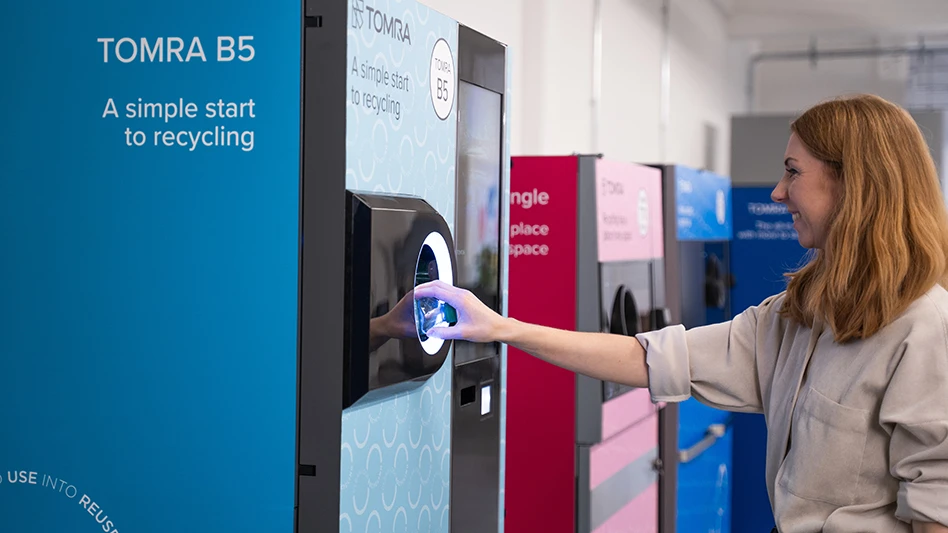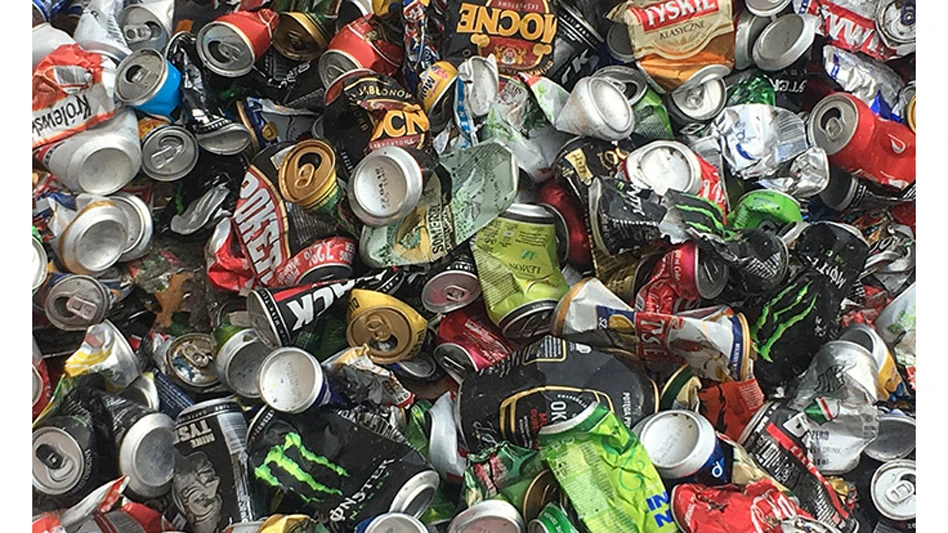 If you’re reading this article, more than likely documents and recorded media are an important part of your business. Many of you store huge amounts of paper and other media for your clients, so when you hear the words “water damage” more than likely the last thing you’re thinking of is the roof, office furniture or business interruptions—you’re thinking about the information you’re storing and what immediate steps you need to take to protect these valuable assets.
If you’re reading this article, more than likely documents and recorded media are an important part of your business. Many of you store huge amounts of paper and other media for your clients, so when you hear the words “water damage” more than likely the last thing you’re thinking of is the roof, office furniture or business interruptions—you’re thinking about the information you’re storing and what immediate steps you need to take to protect these valuable assets.
Whether the information takes the form of books, files, medical records or legal documents or of electronic media, any delay in the decision to dry the materials can result in permanent loss. Inks can break down, making the text illegible. Dirt and grime can penetrate the paper, and pages can adhere. Mold and mildew will grow quickly on water-soaked documents and books. That’s why the key to successfully recovering these materials is a rapid response. And, the restoration task should be handled by a document restoration specialist. There is often one chance to get it right, and one chance only.
An experienced provider will rapidly identify the best recovery method for a particular material, based on the value of the documents and the level of damage. For example, in the right circumstances, freezing documents can drastically reduce the time and cost of restoration. It also prevents the need for mold remediation, page separation and other, more expensive, corrective procedures.
Consider partnering with a provider that can assist in the cleanup of the water-damaged area and that can stabilize the indoor environment, reducing the moisture load to prevent the spoiling of unaffected documents.
The key phases of a document restoration project and the steps involved for a successful recovery follow. However, it is highly recommended that you have a document restoration specialist in your smartphone (and in those of your operations and warehouse team members) who is familiar with your warehouse, procedures and priority areas. Waiting until an incident occurs is not necessarily too late but may impede the potential speed and efficiency of the recovery effort. Most providers are happy to assist in preplanning, which should be a critical part of your disaster recovery plan.
The Recovery Process
The recovery process requires the technical expertise and equipment of a proven service provider. It’s important that the restoration company is up to date with the most advanced techniques available, such as vacuum freeze drying, blast freezing, microbial disinfecting, deodorization and soot removal, for example.
.gif) Equipment such as drying boxes (top) and desiccant dehumidifiers (bottom) can be used to restore documents after water damage has occurred. Equipment such as drying boxes (top) and desiccant dehumidifiers (bottom) can be used to restore documents after water damage has occurred. |
The recovery process to dry and clean documents begins with two initial steps: freezing and inventory and sorting. To halt deterioration, it is essential that documents be frozen as soon as possible. Usually, freezer-equipped truck trailers or freezer warehouses are used for this stage. The frozen materials can be stored until the professional drying procedure begins.
While the documents are frozen, decisions can be made regarding which to dry and clean and which to discard. Work to prune unwanted materials can begin. Loose documents and files stored in cabinets are packed into boxes and labeled to identify contents.
The Drying Procedure
The second phase involves drying the materials. Depending upon the type and extent of damage and the materials in question, different treatments may be recommended. Two primary methods are used to dry documents: vacuum freeze-drying and desiccant drying.
Vacuum Freeze-Drying. A freeze-drying process often is the most efficient and effective method for drying wet papers and other documents. Using accelerated vacuum freeze-dry systems, technicians can restore water-damaged materials quickly and effectively, reducing back processing time by 20 to 30 percent compared with similar systems.
During this process, the materials are placed in an airtight chamber into which negative vacuum pressure is induced. As a function of physics, moisture in the documents turns into a gaseous state. The gas is expelled from the chamber using a vacuum pump and is dispersed into the atmosphere as water vapor. As a result, the documents go from frozen to dry without ever becoming reliquefied.
This method is especially beneficial in cases where documents may warp or distort. After vacuum freeze drying, materials often will have a smoother appearance than is generally achieved via slower, less efficient freeze-drying methods.
|
On-Site Drying Option In some cases, documents must be dried on site at the client’s facility. Confidential files, information needed on a regular basis or legal requirements dictate the situation. In such cases, an on-site drying facility is established. If you have additional warehouse space in your facility that can be cleared, on-site drying may be a convenient and secure option for your business. Discuss options thoroughly with your service provider to offer the best solution for your business and clients. If you have a client with a high number of pull requests, this scenario will offer you the most access to your client’s records and the quickest response times for pull requests. In this case, standing water is removed and damaged documents are packed and placed in a nearby freezer warehouse or refrigerated trailers. The goal is to use the fastest methods to make critical documents usable and to save as many documents as possible. A provider may establish a processing center nearby in a rented building a short distance from the freezer warehouse. This space must be prepared by sealing air leaks and creating a climate-controlled environment via portable industrial desiccant dehumidifiers. This processing center will include a thawing room, where frozen documents are identified, categorized, labeled and logged into a computerized inventory control system. It also should include a second area where moisture is removed from the documents in a drying chamber. Nonpaper items, including X-rays and computer disks, that are not suitable for the freeze-drying process can be salvaged through desiccant drying.
|
Desiccant Drying. In this process, the frozen documents are removed from the packing cases and placed on racks and shelves in a large, vault-like 6,000-square-foot room. Applying desiccant dehumidification, the room’s atmosphere is maintained at 68 degrees Fahrenheit and at 12 percent humidity.
Desiccants attract moisture molecules directly from the air and release them into an exhaust air stream. Desiccants can attract and hold from 10 to more than 10,000 percent of their dry weight in water vapor. The essential characteristic of desiccants is their low surface vapor pressure. A cool, dry desiccant can attract moisture from the air because its surface vapor pressure is low. When the desiccant becomes wet and hot, creating high surface vapor pressure, it will give off vapor to the surrounding air. Vapor moves from the air to the desiccant and back again depending on the vapor pressure differences. Desiccant dehumidifiers use these changing vapor pressures to dry air continuously in a repeating cycle. In so doing, the continually moving dry air created in the drying room removes the moisture from the documents.
Depending on the amount of moisture and documents being dried, the process can take from one to seven days to complete.
The Cleaning Process
After drying, the documents are cleaned and then placed into new boxes, relabeled according to the inventory and returned to the owner. Cleaning removes dirt or grime and, more importantly, fungi spores. Trained staff clean each document using materials such as sponges and scrub pads, while avoiding the application of liquid solutions that would reactivate the moisture in the materials. In cases that involve mold spores, individuals wear personal protective equipment and follow standard procedures for spore removal, including the use of high-efficiency particulate air (HEPA) vacuum systems.
Cleaning also is accomplished on nonpaper materials that are not first dried, such as film, microfiche, X-rays and audio and videotape.
All of this work requires the provider to offer properly trained cleaning and restoration technicians and management staff who oversee your recovery projects. Some providers will use temporary labor while others use professionals that typically have five to 10 years of experience.
Offering the necessary technology also is important. Polygon’s document center in Glendale Heights, Ill., exemplifies this, as the building is dedicated to document recovery. Typically, damaged documents are shipped to the document center from disaster sites across the nation.
A qualified document center should offer blast freezing, which freezes and kills bacteria; stabilization or capacity to freeze documents to mitigate damage; cleaning; desiccant air drying; vacuum freeze drying; and secure document storage.
Preparation is Key
The best insurance against catastrophic loss of vital documents is to be prepared in advance of a disaster. Having a written disaster recovery plan (DRP) can limit the extent of damage by defining and prioritizing the recovery steps. A document recovery section in the overall DRP should detail essential steps and include contact sources for recovery.
Become familiar with a service provider in your area who can identify key priorities for your business and your clientele. Tour the service provider’s facility so you are familiar with security measures and can be confident in communicating the recovery plan to your clients so they know their records are safe and secure through the entire process.
If you plan accordingly, a water damage incident doesn’t have to be a disaster; it can be an opportunity to show your clients that you can handle any situation with speed and efficiency and, most importantly, protect their vital records.
The author is document division manager of Polygon (a former Munters company). She can be reached at Summer.street@polygongroup.com or at 630-347-6343.
Latest from Recycling Today
- Alberta Ag-Plastic pilot program continues, expands with renewed funding
- ReMA urges open intra-North American scrap trade
- Axium awarded by regional organization
- China to introduce steel export quotas
- Thyssenkrupp idles capacity in Europe
- Phoenix Technologies closes Ohio rPET facility
- EPA selects 2 governments in Pennsylvania to receive recycling, waste grants
- NWRA Florida Chapter announces 2025 Legislative Champion Awards





